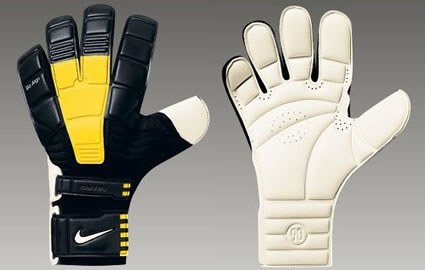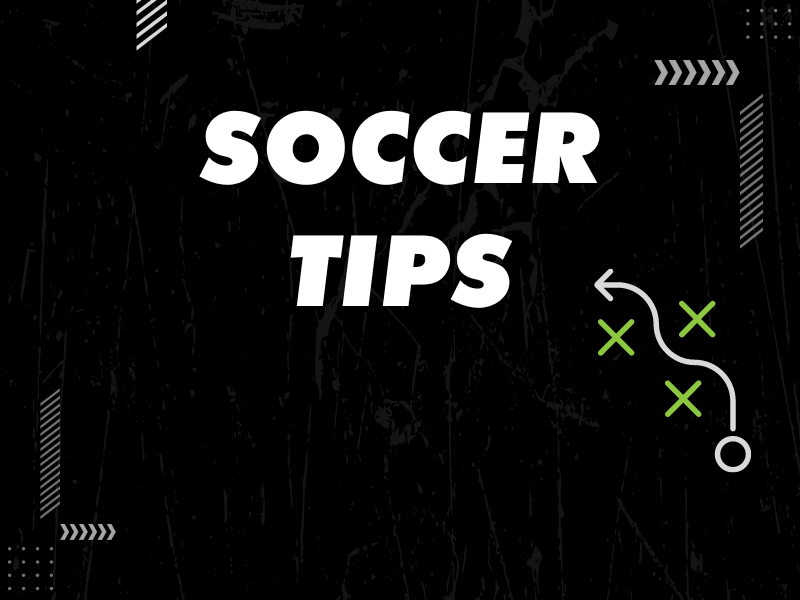
Goalkeeper gloves: How do you select the right goalkeeper gloves? Gloves are an essential part of being a goalkeeper. They help keep the ball in the safest place on the field: in our hands. There are many factors to consider when making a decision about what keeper gloves you want to wear. Update: Take a look at the Coerver Goalkeeping Essentials DVD. When you purchase a pair of goalkeeper gloves you are paying for the grip, in other words quality of the latex. The better or more technologically advanced the latex is the higher the price. Some palms are super soft very porous latex and others are denser foams, such as with the Reusch XCG, to increase durability and offer a true all weather glove. Keeper gloves are now engineered with elastic threads to avoid tear outs and latex on the inside of the glove to increase over all feel and absorption. Gloves are perishables and there is some truth to; ”You get what you pay for”. When making a purchasing decision the first thing to decide is “How much you want to pay”? You can find an acceptable glove in just about any price range especially with resources like www.keeperstop.com, (shameless plug). Next decide if you want a finger protection system or not? Examples of the different systems are Nike’s pre-curved Wired Technology and plastic finger protection systems offered by Adidas, Reusch, and Sells. Just about every manufacturer carries a few finger protection options. Nike and Sell’s pre-curved palm has a slightly concave profile. I prefer the Reusch because the Plastic Stays are removable in the event one breaks or the support isn’t needed. The third aspect to consider is grip vs. durability. As mentioned before grip is the most important aspect when making a purchasing decision on a game glove. Find a super soft latex or the equivalent. If you are buying a practice glove you may want to consider a less expensive glove that provides a good balance between grip and durability. Fourthly, figure out what fit is best for you. Do you have big meat hooks for hands or are they slimmer. Common terms that a slimmer fit are ergo and narrow cut. Reusch makes a narrow cut match glove for the sleeker hand. Many female keepers enjoy the Reusch Ortho Sleek since it is not bulky through the backhand and offers a finger protection system. Reusch’s Flash is an example of a sleeker fit and the durable XCG foam for a developing keeper at a $45.00 price point. The cut of the palm can be in many forms on goalkeeper gloves: The Surround Cut. The palm envelops the outer-side of the hand, foaming the backhand of the glove. This equates to less stitching, more comfort, and a sleeker design. An example of this is Sells Goalkeeper Products Adhesion Plus Surround and Dual Adhesion Contact. This type of glove cut is new. Flat. Most gloves on the market are flat palm. Flat palm has perimeter seaming for a traditional fit and large latex-to-ball contact area. Rolled Finger or Roll Index. Offers a combination of a Flat and Roll Finger glove. The Roll Index cut gives the traditional feel of the Flat Palm but the latex surrounding the index finger provides extra traction around this key area. Examples are Sondico’s Wrap Supa and Hyper XMG. Negative. The Negative Cut has interior seams around the fingers providing a snug fitting glove. Sell’s Adhesion Plus Profile has latex gussets to ensure latex-to-ball contact at all times. Reusch’s Bundesliga is another example. The Bundesliga also has a deeper thumb notch on the face of the glove that includes an elasticized piece below the foam to help eliminate tear outs. My recommendation for a developing keeper is to select a glove with at least a soft latex palm. The garden glove variety with rubber or a polyurethane palm is not recommended since they provide no grip. Soft latex is less durable than the rubber or polyurethane variety but they offer an acceptable grip for a youth keeper while providing the needed durability. A developing keeper will be hard on their gloves while learning proper catching and diving techniques. At this stage it may not be worth the investment to buy a high priced glove with an exceptional grip because these gloves will wear quickly. More experienced or older keepers require a glove that offers a superior grip. Super soft latex is one of the best palms. It provides the needed tacky gripping surface to control shots with more power. Reusch calls their best foam “Mega foam” and their durable match palm “XCG”. Adidas uses the E³S foam technology for incredible cushioning, protection and feel in their top of the line gloves. Nike uses the Contact foam that has an excellent grip in wet and dry conditions. Sells has the Adhesion Plus Latex which is comprised of refined and processed natural SuperSoft latex that gives outstanding grip when wet. How to select the right size of gloves: When making a sizing decision you want to consider comfort. Your hand or fingers should not be busting out of the seams. I like to have at least a quarter inch between my fingertip and the tip of the glove. This allows for a better grip since the latex has some room to move with the catch. The little bit of extra room also helps take stress off the stitching and latex increasing the durability. Lay your hand flat on a ruler or tape measure as you would if you were giving someone a high five. Measure from the fat thumb knuckle straight across the thicker part of the hand. As you can see by the picture below my hand measures a shade less than 4.5 inches across. In order to find a glove that is approximately my size I would double that 4.4 inches to learn that I need a size 9 glove. It is not always that easy and clean. For example, a younger keeper’s hand may measure 3.25 inches. The estimated glove size is 6.5. If you live outside the US it is possible to find half sizes but not in the US. Sells, a top English goalkeeper brand, will introduce half sizes in the US. If the keeper’s hand is barely over a whole number it may be better to round down such as 3.1 or 3.2 inches. If we double those measurements a size 7 glove may be too big for a youth keeper. Whether the keeper wears a size 6 or 7 will also depend on the manufacturer. This is not an exact science or measurement only a guide to help fit your keeper into an appropriate glove. For more information or questions on goalkeeper equipment, education, trainers, and camps please visit www.keeperstop.com. Take a look at the Coerver Goalkeeping Essentials DVD. More Goalkeeper Information: |
Goalkeepers: Selecting Your Gloves















